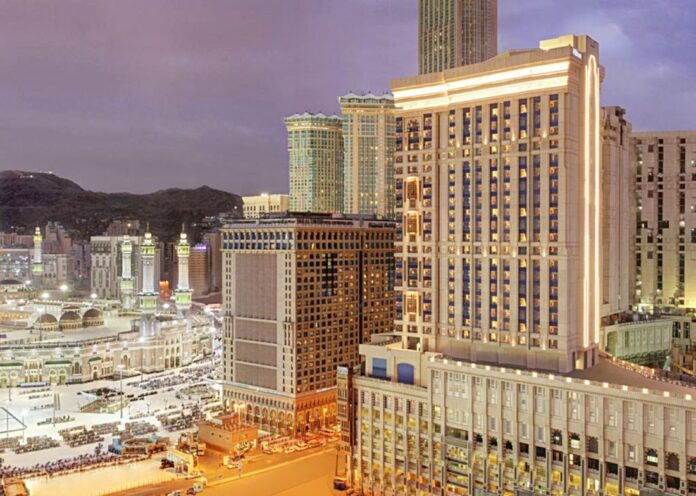CAIRO: Makkah and Madinah’s hotel occupancy rates have surged by 177 percent and 122 percent year on year, respectively, in the second quarter of 2022 after 23 million Umrah permits were issued in the first half of 2022, revealed a recent hotel industry report.
According to Colliers’ MENA Hotels Quarterly report, Riyadh saw a 22 percent year-on-year increase in the second quarter of 2022 occupancy rates as COVID-19 restrictions eased over the past year.
On the other hand, Jeddah witnessed a 10 percent rise following the “Jeddah Season” initiative, which took place from May 2 to June 30.
Dammam’s hotel occupancy rates also slightly increased by 3 percent during the second quarter of 2022.
The overall branded hotels in the five cities went up to 63,100 keys in the second quarter of 2022 from 59,300 during the same period last year.
In the UAE, Abu Dhabi’s hotel occupancy rates saw the highest increase of 31 percent year on year in the second quarter of 2022, followed by Dubai at 30 percent, Sharjah at 15 percent and Ras Al-Khaimah at 1 percent.
Fujairah was the only city that witnessed a 5 percent decline in hotel occupancy rates during the reported period.
This recovery comes after lockdown regulations were lifted and hotels were allowed to return to full capacity.
The total number of all five cities of the UAE reported 116,800 keys in the second quarter of 2022 from 109,500 in the year-ago period.
The report further revealed that branded hotels in the UAE are forecast to touch 122,200 keys by the end of this year.
Egypt also followed a similar trend, with three popular tourist cities witnessing an upswing in hotel occupancy rates.
Cairo’s occupancy soared by 71 percent year on year, even as Hurghada and Sharm El-Sheikh increased by 42 and 14 percent year on year, respectively, in the second quarter of 2022.
Alexandria was the only city that saw a 2 percent year-on-year decrease from the second quarter of last year.
Total branded hotel keys in these four cities slightly rose to 88,000 from April to June 2022 from 87,600 in the same period last year. The report estimated that keys would touch 91,900 by December this year.
Doha, which has been in the spotlight for the 2022 FIFA World Cup preparations, booked a 141 percent increase in the hotel occupancy rates in the second quarter of this year.
Furthermore, Qatar has partnered with many worldwide cruise lines, such as Costa Cruises, to improve its cruise infrastructure and offer a seaside experience for football enthusiasts expected to tour the city.
Hotels in Kuwait City, Muscat and Manama also saw an increase in their occupancy rates by 46 percent, 34 percent and 9 percent, respectively, during the period under review.
However, Amman’s hotel occupancy rates saw a 7 percent decline from the second quarter of 2021. The report expects a turnaround with the recently developed Ritz-Carlton Amman.
Total branded hotel keys in the five cities mentioned above increased to 46,600 in the second quarter of 2022, vis-a-vis 44,200 in the year-ago period.
With the launch of Kuwait City’s two luxurious hotels, Grand Hyatt and Park Inn, the brand hotel keys in the region could reach 61,600 by December this year.
Bahrain is also expected to add to those encouraging numbers with the launch of Hilton Bahrain, a luxury property with 384 rooms and exciting recreational activities and services.
Riyadh and Dubai are also expected to inaugurate two new hotels, Fairmont Ramla and Atlantis Royal, by the end of this year, improving the hospitality landscape of Saudi Arabia and the UAE.
Sharm El-Sheikh and Muscat will benefit from tourists attending two significant events in 2022, the UN Climate Change Conference in Egypt and the Food and Hospitality Oman event.
Overall, the demand and supply prospects look promising as the entire region introduces new hotels, projects, and initiatives for its tourism sector.

